One year in Israel since the 7 October attack – photo essay
Photographer for Getty Images Amir Levy talks about some of his most powerful images taken throughout the year since the 7 October attack by Hamas
nbar Goldstein reacts as she visits her parents' house for the first time after it was damaged in the 7 October Hamas attack on the kibbutz. Photograph: Amir Levy/Getty Images
Saturday 5 October 2024
Iam an Israeli-American photojournalist with 15 years of experience, but nothing could have fully prepared me for the past year. I’ve been covering the Gaza and Lebanon borders and other breaking news every day since the 7 October attack for Getty Images, witnessing and capturing the raw emotions and human toll of the conflict. Balancing the intensity of documenting war while raising two children with my partner has been both emotionally and mentally demanding. Every shot I take feels like a personal responsibility — to tell the stories of those caught in the conflict, while also protecting my own family from its harsh realities.
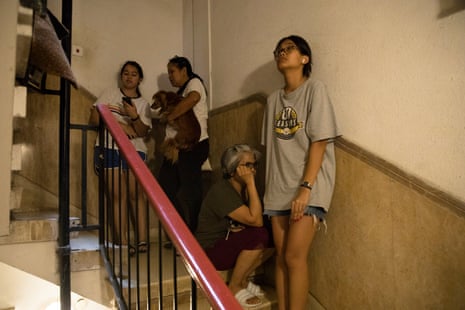
On the morning of 7 October, my family and I were scheduled to hold a memorial event for my wife’s father in our garden. Everything was prepared the night before. We woke up on Saturday, grabbed our phones, and were stunned by what we saw: alarms ringing across vast areas of the country and vague rumours of events unfolding at the Gaza border. It quickly became clear that we needed to cancel the event. I hurriedly packed up my equipment and set out.
At that moment, I had no idea I was embarking on a journey to document such a significant event. My first stop was the hospital in Tel Aviv. There I witnessed crowds arriving to donate blood, and injured people flooding the emergency room. I called my wife and described the scene, and she, who had witnessed live the collapse of the twin towers, told me: “Amir, this is Israel’s 9/11.”
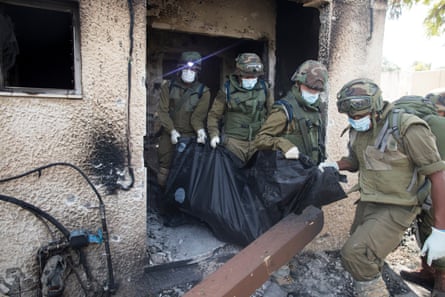
Three days after the Hamas attack, the army allowed journalists to enter one of the kibbutzim that had been hit, even though fighting was ongoing in the area. On the sides of the road leading to the kibbutz were dozens of burnt-out vehicles riddled with bullet holes. At the entrance lay the bodies of Hamas people, still clutching their weapons, while Israeli soldiers surrounded us as sporadic gunfire could still be heard. The scenes in the kibbutz will stay with me for the rest of my life. A place usually known for its pastoral tranquility had become a site of unimaginable horror. Soldiers were collecting the bodies of residents from their houses, while we manoeuvered our way between the corpses of Hamas attackers and their victims. Homes that days ago were full of life and happiness were now reduced to bloodstained ruins. But perhaps the thing that will stay with me most is the smell – a smell of death everywhere.
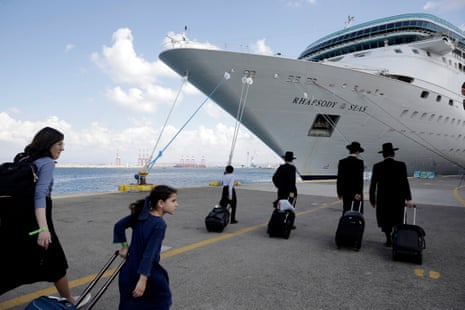
The mood in Israel was one of deep anxiety – an existential fear. Hezbollah had begun firing toward the north of the country, Iran was issuing threats, and warnings of a looming regional war echoed from all sides. The US government offered its citizens an immediate option to leave Israel by ship. As American citizens, my family had that option. In reality, very few people took advantage of this offer. As I stood near the ship, taking photos of it, I hoped I was not making a huge mistake by not taking my family out of Israel.
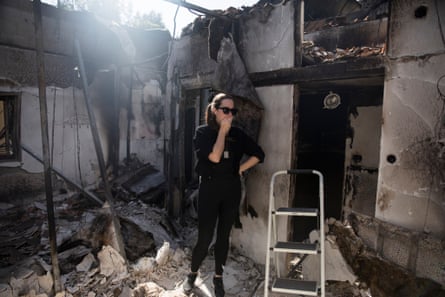
Access to the destroyed kibbutzim remained very restricted. Residents were deeply concerned about their privacy and didn’t want their tragedy to become a spectacle. On the other hand, I knew how important it was to continue documenting what had happened inside the kibbutzim, so I sought out personal stories. I met Inbar at one of the demonstrations for the hostages. She told me she was planning to visit the kibbutz with her parents for the first time, and I offered to accompany them. Inbar had lost her brother, while his wife and children were being held captive in Gaza. Inbar and her family explained that their family had endured the full “package” of suffering – they lost loved ones, had family members kidnapped, and their home was completely destroyed. It was heartbreaking to enter their home with them. They sifted through the ashes, searching for any belongings that had survived. More than anything, they hoped to find photo albums, but none were found. Inbar’s nieces, nephew and their mother – Tal, Gal, Agam and Hen – were eventually released in the first hostages exchange deal.
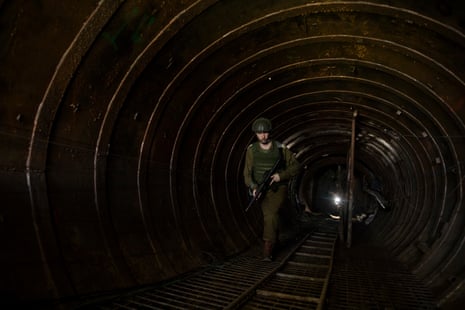
The Israeli military has significantly restricted the media’s ability to report on events inside Gaza. Journalists were allowed into Gaza by invitation only and under military escort, with access limited to locations determined by the army. On one such occasion, I entered an alleged Hamas tunnel. Its entrance was buried in sand, about 300 metres from the Erez crossing. The first section descended deep underground, leading to a large area wide enough for vehicles to move through. Along the tunnel were visible preparations for electrical infrastructure. In another section there was a narrow passage blocked by a gate. The passage led deeper underground, with no end in sight.

Each time hostages were released alive, there was immense excitement. Everyone eagerly awaited the first images of the freed captives, and there was great curiosity about their condition. Israeli authorities are very protective of the privacy of hostages and their families, so the first images, usually of when they are reunited with family members, are typically released by hospitals or government offices. Amit Susanna, who was freed from Hamas captivity in the first hostage deal, returned to her home in Kibbutz Kfar Aza a few weeks after her release. It was evident that returning to the place from which she had been abducted was emotionally difficult for her. However, it was equally important for her to speak to the public through the media, hoping to expedite another deal that would free her friends still being held.
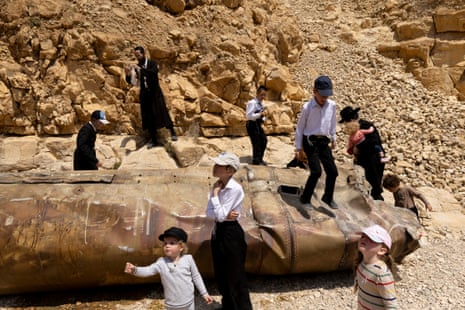
One night, Iran launched barrages of missiles and attack drones towards Israel. The vast majority were intercepted in the air — some by allied forces outside Israeli territory, and others within Israeli airspace. Israel woke up to a normal morning, with no signs of the drama that had unfolded during the night. Since most of the missiles were aimed at army bases in the southern part of the country, the majority of the intercepted debris fell in uninhabited, desert areas. When I received a report about a location where a missile fragment had landed, I decided to head there. I parked as close as possible to the site and walked through the desert for about 30 minutes. I hoped there would be other people around to make the scene more interesting, but when I arrived, the place was deserted — just a fragment lying in the middle of nowhere. I took several photos from different angles, waited a few minutes, and prepared for the walk back. Suddenly, a family of ultra-Orthodox Jews arrived. They were very excited about the fragment and began examining it, turning it over, treating the space like a playground. Naturally, for me, they came at just the right moment.
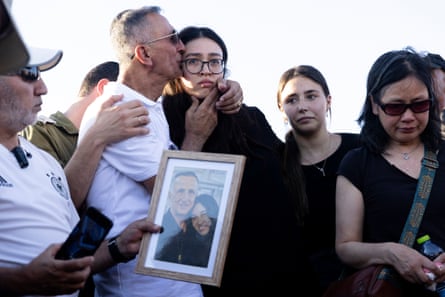
Noa Argamani, who was kidnapped from the Nova music festival in Re’im, was one of the first hostages to gain global attention after a video of her and her boyfriend being abducted surfaced online. During her time in captivity, her mother was battling cancer, and her condition rapidly deteriorated. Noa was rescued in a military operation by the Israeli army, along with three other hostages just a few days before her mother passed away. She managed to say goodbye to her mother. In this photo, taken at her mother’s funeral, her father is seen kissing her over her mother’s grave.
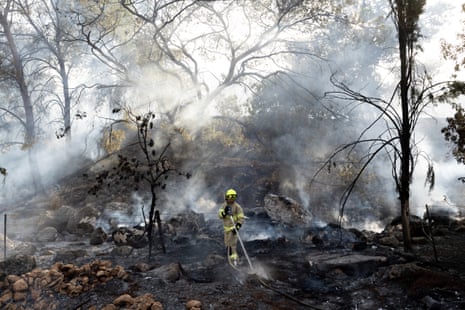
Until recently, events along the Israel-Lebanon border remained relatively minor compared to the war in Gaza. Most of Hezbollah’s attacks included anti-tank missile fire toward villages located right near the border, and rocket fire aimed at evacuated villages and towns. Although most of the attention was naturally focused on the war in Gaza, the consequences of Hezbollah’s rocket fire towards northern Israel affected hundreds of thousands of residents, who were forced to evacuate their homes for an extended period of time. The combination of rockets, intense heat, and dense woods led to ongoing fires. Firefighting efforts were severely limited due to the danger of approaching the border fence.
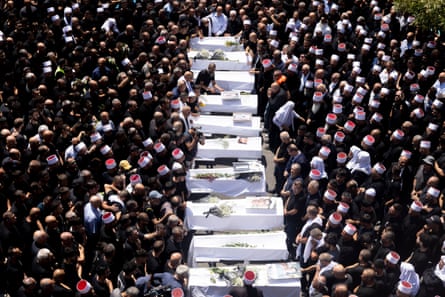
Photographing funerals has always been a challenging experience. It’s an emotionally charged and sensitive subject. Unfortunately, over the past year, documenting funerals has become a routine part of my life. Despite the difficulty, I believe in the importance of documenting these moments. It serves as a powerful testament to the immense suffering that wars bring. The mass funeral in the Druze village of Majdal Shams was different from the others. The funeral took place the day after the tragedy in which a rocket fired by Hezbollah blew up a soccer field, killing 12 children. The village was in deep shock from the loss of 12 of its sons and daughters. I captured this image from the roof of a tall building in the centre of the village. It was crucial for me to find an angle that would capture all the coffins and the crowds that came to pay their respects, despite the danger of staying outside of shelters so close to the border.
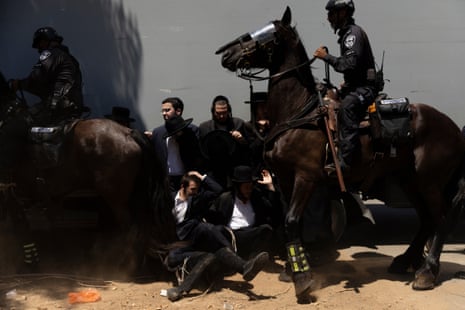
The controversy over the military exemption of ultra-Orthodox Jews, known as Haredis, has been an issue in Israel for decades. Haredis receive full exemption from being drafting to the IDF, a policy that has sparked claims of injustice and inequality. The sense of urgency in Israel in past year, coupled with a shortage of military personnel, has only fuelled the debate. After the supreme court ruled that the ultra-Orthodox must be drafted, protests erupted, leading to clashes between demonstrators and police, particularly near the military drafting base. Despite the court ruling, things haven’t changed much and the Haredis are still enjoying a unique arrangement.
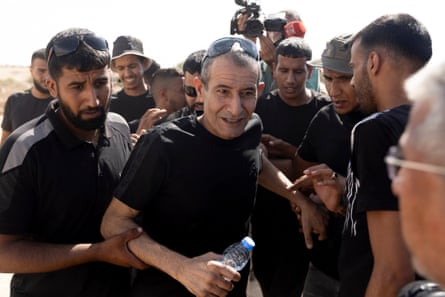
Qaid Farhan Al-Qadi was released from Hamas captivity after 10 months. The IDF found him alone in a tunnel, after his captors fled upon hearing the approaching Israeli forces. His homecoming took place in his village, Karkur, in the Bedouin diaspora. While waiting for Qaid to arrive, we were offered coffee and welcomed by the locals. However, when he finally arrived, the atmosphere shifted. Tensions rose, and the residents began to attack the journalists. After a few minutes, Qaid himself managed to calm the situation. It was very important to him to speak with the media, and he did, calling for the release of the remaining hostages.
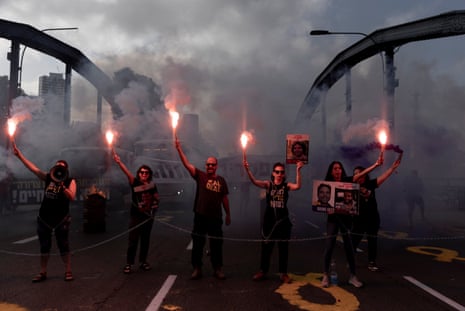
From the beginning, it was clear that the issue of the hostages was different. Initially, the families placed their trust in the government, believing it would quickly reach a deal. Indeed, the first agreement was swiftly put into motion. However, since then, there’s been a growing sense that progress has stalled, and more and more families feel that the government is not doing everything in its power to free their loved ones. Protests have become a daily occurrence, whether it’s a small group of families or large-scale demonstrations. But little seems to change, and the families are still feeling lost as to what they can do about it. This photo was taken during a spontaneous protest by several hostage families who blocked a major road in Tel Aviv.


No comments:
Post a Comment